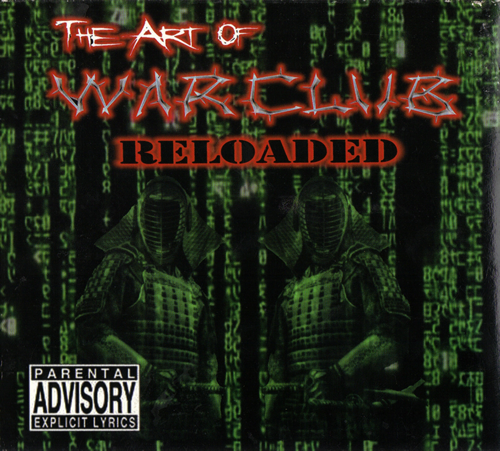Title: MYTHS AND CONQUESTS , By: Blank, Jonah, U.S. News & World Report, 00415537, 08/16/99-08/23/99, Vol. 127, Issue 7
A tale of a Toltec god who came back as a man of war
Thirteen years before the millennium, an unusual man appeared on the shores of Mexico's Yucatan peninsula. He had fair skin, wore his hair exuberantly untrimmed, and (most remarkably to the bare-chinned populace) sported a flowing black beard. In his homeland, legend had it, he had been known as a prince of peace. He was said to be fully man, yet fully god. His people believed he had died in an act of supreme self-sacrifice and that someday he would come again.
The Maya called the newcomer Kukulkan. The Toltecs, whom he had ruled before fate drove him into exile, knew him as Quetzalcoatl. Some of his story is myth, some is history, but what's certain is that the coming of this stranger marked the end of a glorious era for all of Mesoamerica and the beginning of a new world.
The 600 years before the stranger's arrival had seen a flowering of culture throughout Mexico and Central America. At its height in the seventh century, the capital city of the Teotihuacanos (on the outskirts of today's Mexico City) had a population of 200,000-10 times that of Paris at the millennium. And the Maya, who lived farther south in what is now the Yucatan, Guatemala, Belize, and Honduras, reached scientific heights not equaled until modern times. Astronomers using Neolithic technology, for example, made calculations about heavenly bodies that nearly match those of modern astrophysicists.
By the mid-10th century, however, the Maya had all but abandoned their spectacular cities and temple complexes. What so dispirited them? What stripped these proud skygazers of their confidence, forced them to cast their eyes downward rather than up at the heavens? Is it mere chance that the Mayan decline coincides with the Toltecs' arrival?
In A.D. 908-the last year a date was inscribed in the fabulously complex Long Count calendar perfected by the classic Maya-a warlike people emerged from the harsh wastelands of the North. The Aztecs (who claimed descent from these ancients) would call them the Toltecs, meaning the "Artificers." From a remove of several centuries, the Aztecs of course had no way of knowing that any culture had preceded their ancestors'. So they credited the Toltecs with building the awesome pyramids at Teotihuacan, discovering the secrets of mathematics and astronomy, and shaping the religious practices common to all Mesoamericans.
The Toltecs unknowingly misappropriated America's past, but they (also unknowingly) helped shape the continent's future. The pivotal time was the millennium, and the pivotal character was a king called Topiltzin. It was he who moved the Toltec capital to Tula, a site near the sacred ruins of Teotihuacan from which his people would dominate Mesoamerica for 200 years.
God or king? The monarch identified himself so closely with the god Quetzalcoatl--the Feathered Serpent--that he took this name as his own. Eventually, tales of the king and stories of the god became so closely intertwined that later generations barely knew where one Quetzalcoatl left off and the other began.
Feathered Serpent (the king) abhorred human sacrifice, a mainstay of Mesoamerican religion from time immemorial. Perhaps this was seen as impiety, perhaps it left the restless Toltec warriors itching for slaughter, or perhaps the battle was merely politics clothed in the garb of religion. Whatever the reason, a rebellion was launched by devotees of the god Tezcatlipoca, or Smoking Mirror, patron of soldiers and sorcerers.
Aztec poems would later tell of Smoking Mirror's parade of treachery, how he tricked Feathered Serpent into drinking an enervating potion, how he strolled naked through the market to seduce the king's daughter. Loyalists finally killed Smoking Mirror, but the trickster retained enough posthumous magic to prevent the citizens of Tula from removing his rotting corpse. To save his city from the overpowering aura of death, Feathered Serpent decreed his own banishment. He set sail across the eastern ocean on a raft made of serpents, vowing that one day he would return.
The Maya couldn't match the Toltecs in arms, but they kept much better records. While the history of Tula has to be pieced together from Aztec accounts written centuries after the empire's fall, the Maya (by then using the less precise 256-year Short Count calendar rather than the 5,127-year Long Count) kept good track of important events. In A.D. 987, their chronicles say, a force of Northerners arrived by sea and carved out a small empire. The leader of this band was called Kukulkan--the Maya name for Feathered Serpent. And archaeological evidence shows that the city of Chichen Itza, the finest amalgamation of Mayan and Toltec culture, was indeed founded just before the millennium.
Whatever squeamishness Feathered Serpent had about human sacrifice didn't last long: Chichen Itza has wall carvings of skull racks stacked high with severed heads, and altars for burning blood-sticky hearts. The partisans of Smoking Mirror, meanwhile, extended Tula's control from the Atlantic to the Pacific. The Toltecs were indomitable warriors, but their descendants would be felled by a myth.
In the Aztec calendar, "One Reed" was the name of the year Feathered Serpent had been born. Mesoamerican concepts of time being cyclical, it was also the name used for the year Quetzalcoatl was destined to return from his long exile.
In a particular year One Reed-1519 by the Gregorian
calendar-a band of strangers beached their ships after an arduous voyage
across the wide ocean. Their leader had fair skin, exuberantly long
hair, and (most remarkably to the bare-chinned populace) a flowing black
beard. Motecuhzoma Xocoyotzin, later known as Montezuma II, king of
the mightiest empire on two continents, reverently opened the doors
of his palace to the conquistador Hernando Cortes. How blessed, he thought,
to welcome Feathered Serpent home again at last.
War Club - Riotstage


Hear more War Cub music @
Mexica Uprising MySpace
Add Mexica Uprising to your
friends list to get updates, news,
enter contests, and get free revolutionary contraband.
Featured Link:
"If Brown (vs. Board of Education) was just about letting Black people into a White school, well we don’t care about that anymore. We don’t necessarily want to go to White schools. What we want to do is teach ourselves, teach our children the way we have of teaching. We don’t want to drink from a White water fountain...We don’t need a White water fountain. So the whole issue of segregation and the whole issue of the Civil Rights Movement is all within the box of White culture and White supremacy. We should not still be fighting for what they have. We are not interested in what they have because we have so much more and because the world is so much larger. And ultimately the White way, the American way, the neo liberal, capitalist way of life will eventually lead to our own destruction. And so it isn’t about an argument of joining neo liberalism, it’s about us being able, as human beings, to surpass the barrier."
- Marcos Aguilar (Principal, Academia Semillas del Pueblo)
![]()
Grow
a Mexica Garden
12/31/06
The
Aztecs: Their History,
Manners, and Customs by:
Lucien Biart
12/29/06
6 New Music Videos
Including
Dead Prez, Quinto Sol,
and Warclub
12/29/06
Kalpulli
"Mixcoatl" mp3 album
download Now Available
for Purchase
9/12/06
Che/Marcos/Zapata
T-shirt
Now Available for Purchase
7/31/06
M-1
"Til We Get There"
Music Video
7/31/06
Native
Guns "Champion"
Live Video
7/31/06
Sub-Comandante
Marcos
T-shirt Now Available for Purchase
7/26/06
11 New Music Videos Including
Dead Prez, Native Guns,
El Vuh, and Olmeca
7/10/06
Howard Zinn's
A People's
History of the United States
7/02/06
The
Tamil Tigers
7/02/06
The Sandinista
Revolution
6/26/06
The Cuban
Revolution
6/26/06
Che Guevara/Emiliano
Zapata
T-shirts Now in Stock
6/25/06
Free Online Books
4/01/06
"Decolonize"
and "Sub-verses"
from Aztlan Underground
Now Available for Purchase
4/01/06
Zapatista
"Ya Basta" T-shirt
Now Available for Purchase
3/19/06
An
Analytical Dictionary
of Nahuatl by Frances
Kartutten Download
3/19/06
Tattoo
Designs
2/8/06


